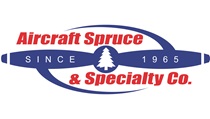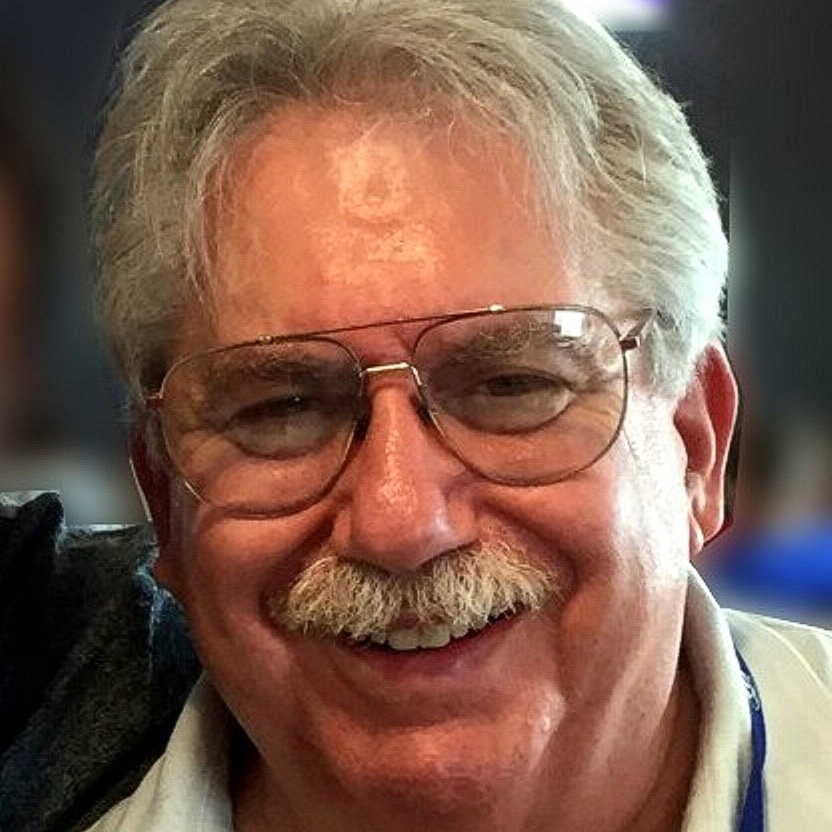
Savvy Maintenance: Opinion
Time capsule

The engines themselves haven’t changed much. The Continental TSIO-550-K that powers the new-production Cirrus SR22T is not much different from the Continental TSIO-520-BBs that power my 1979 Cessna Turbo 310, and those are second cousins to the Continental O-470-R that powered my first airplane, a 1968 Cessna 182 Skylane. The Lycoming IO-360-M1A that powers the new-production Diamond DA40 XLS is nearly indistinguishable from the Lycoming IO-360-A1B6 in the 1971 Cessna 177RG Cardinal.
The Continental O-470, TSIO-520 and TSIO-550 type certificates were issued in 1952, 1956, and 1980, respectively. The Lycoming IO-360 was certified in 1960 as a fuel-injected variant of the carbureted O-360 certified in 1955. It’s hard not to wonder why these Jurassic engines are still being manufactured and installed in new-production aircraft, instead of basking proudly in some aviation museum next to the Curtiss OX-5, Le Rhône rotary, Warner-Scarab, and Wright Whirlwind.
The reason, of course, is that the cost and effort involved in certifying a new aircraft engine design is so daunting that only companies with seriously deep pockets can consider it. Even among those deep-pocket companies, the track record for innovation is dismal.
Does anyone remember the Continental 6-285 Tiara engine that was certified in 1969? It was a novel, highly innovative, clean-sheet piston engine design that cost Continental millions to develop and certify, but it turned out to be a commercial flop that powered a handful of Piper Pawnee agplanes and then quietly faded into obscurity. Then in 1986, the company spent hundreds of thousands to certify a liquid-cooled TSIOL-520 Voyager engine that also was a resounding commercial failure.
Lots of dual electronic ignition systems are flying in homebuilts with great success, but for certified aircraft the FAA remains a significant obstacle to innovation.In the mid-1990s, Lycoming certified an IO-580 engine at the request of Cessna, which was looking for a more modern engine for its “restart” 206 Skywagon. However, Cessna encountered so many cylinder problems that, rather than delay production, the company decided to go with the tried-and-true IO-540 engine (certified in 1960) instead. A handful of IO-580s found their way onto aerobatic aircraft, after which the engine was relegated to the scrap heap of history.
Antiquated ignition
What amazes me even more is that our engines still use fixed-timed magneto ignition systems. This technology was introduced in automotive engines in 1897 by Robert Bosch (before cars had an electrical system) and gained popularity in aviation during the 1920s and 1930s (before airplanes had them). The four big Continental/Bendix S-1200 mags on my Cessna 310 are nearly identical to the ones produced by the Bendix/Scintilla factory in 1935.
The first electronic ignition system was developed by Delco-Remy in 1948 and was offered by Pontiac in 1963. Fully solid-state electronic ignition systems with microprocessor-controlled variable timing became the norm in automobiles during the 1990s. Aviation electronic ignition systems from E-MAG and Light Speed Engineering have been de rigueur on kitplanes and Light Sport aircraft for a decade. Yet almost all of today’s certified new-production GA airplanes with their fully redundant electrical systems are still being delivered with old-fashioned, fixed-timed “tractor mags” on their engines. Why?
Electroair began working with the FAA in early 2009 to obtain supplemental type certificate approval of its electronic ignition system. It took the company more than two years of work before the FAA approved the electronic ignition system on four-cylinder Continental and Lycoming engines in mid-2011, and nearly three more years to gain approval for six-cylinder engines. Even after this five-year effort, the FAA would only approve replacing one magneto with the Electroair electronic ignition system; the other “tractor mag” must be retained even though it’s demonstrably far less reliable. Lots of dual Electroair installations are flying in homebuilts with great success, but for certified aircraft the FAA remains a significant obstacle to innovation.
The promise of full-authority digital engine control (FADEC) systems for piston aircraft engines—the subject of heavy investment by both Continental and Lycoming in the late 1990s—has gone almost nowhere. Lycoming’s EPIC system, developed in partnership with Unison, never made it into production. Continental acquired the FADEC system developed by Aerosance and succeeded in getting it certified for both Continental and Lycoming engines, but only a tiny handful of these “PowerLink” systems have been delivered (most of them on Liberty XL2 trainers), and by any measure the program has been a commercial failure. Do you detect a pattern?
Outside the box
A notable exception involves an obscure Austrian subsidiary of a Canadian company mostly known for its two-stroke snowmobile, motorbike, and ATV engines that quietly redefined the small (under 150 horsepower), four-stroke piston aircraft engine.
I’ve got my fingers and toes crossed for the early adopters of these engines, because I see diesels as the best hope for the future of piston GA.The Rotax 912 story began in 1989, when the first 80-horsepower engines were shipped to customers in Europe for use on ultralights and motorgliders. But almost nobody outside the ultralight community took notice, especially since the 912 had a ridiculously short 600-hour time between overhauls. Yet Rotax pressed forward, and in 1994 obtained FAA certification of the 80-horsepower engine. A 115-horsepower turbocharged version, a 100-horsepower ultralight version, and a certified 100-horsepower version followed in quick succession. TBO was increased to 1,000 hours, then 1,200 hours, then 1,500 hours. These engines started selling strongly abroad, but never gained much traction in the United States until 2004 when the FAA approved the LSA rule. Sexy, factory-built Special Light Sport aircraft started showing up at Oshkosh, Lakeland, and Sebring. Almost all were powered by Rotax 912-series engines.
Designers of S-LSAs overwhelmingly chose the Rotax 912 because it was substantially lighter, more compact, and more efficient than traditional 100-horsepower engines such as the Continental O-200 and the Lycoming O-235. The Rotax design uses much smaller cylinders turning much higher revolutions—something made possible by an integral reduction gearbox. The cylinder heads are liquid cooled, the ignition system is electronic, and the engine is designed to run on unleaded mogas instead of 100LL. What’s not to like?
By 2009, the TBO of both the 912 and 914 engines had increased to 2,000 hours—and I’m told they usually look pristine inside when torn down at that point. In 2012, the fuel-injected, FADEC-controlled 912iS started shipping. By 2014, Rotax had shipped 50,000 of these engines. As I write this, the latest version of this engine is the 135-horsepower, turbocharged 915iS. I sure wish Rotax would come up with a 300-horsepower engine.
Squeezebangs
Other new engine designs are emerging. To me, the most exciting are compression ignition (diesel) engines designed to run on Jet A.
Cessna announced in 2013 a new version of the venerable Cessna 182—dubbed the Skylane JT–A—with a French-built SMA turbodiesel engine. Both Cessna and SMA made major investments in the development and certification of this aircraft, but just as first customer deliveries were scheduled to begin, Cessna suddenly pulled the plug on the Skylane JT–A. Cessna never fully explained the reason behind its decision, although we do know that one of the flight test aircraft suffered an in-flight turbocharger failure and made a successful off-airport landing. Whatever the reason for the program cancellation, it was a huge disappointment; the Skylane JT–A would have been a big step forward in putting diesel-powered GA airplanes on the map.
In Germany, Thielert Aircraft Engines GmbH developed a Centurion line of aircraft engines that borrowed heavily from Mercedes-Benz automotive diesels. Despite being certified, the engines had serious issues with reduction gearbox longevity. Then Thielert became insolvent, and China’s AVIC acquired the rights to these engines. They were resurrected via AVIC’s German subsidiary Technify Motors GmbH, which apparently resolved the gearbox issues. The engines are now being marketed through Continental Motors Group (also owned by AVIC).
The Continental/Technify 135-horsepower CD-135 and 155-horsepower CD-155 four-cylinder turbodiesel engines are STC’d for the Cessna 172 Skyhawk, the Diamond DA40 Star and DA42 Twin Star, and the Piper PA–28-161 Warrior and PA–28-181 Archer. In 2014, Piper started shipping the new-production Archer DX powered by a CD-155 diesel, and in April the company announced it would produce a twin-engine Seminole DX powered by a pair of 170-horsepower CD-170 diesels. Then Cessna did it again: In May, the company announced it had decided to scrap the 172 Skyhawk JT–A powered by the Continental CD-155—another disappointing setback for mass-market diesel GA.
Diamond Aircraft Industries was an early adopter of the Thielert diesels in its DA42 Twin Star. When Thielert went bust, Diamond suspended production of the DA42 for about a year, and owners of these now-unsupported engines were in a world of hurt. Diamond restarted DA42 production in 2009 using a 168-horsepower AE 300 diesel engine built by its own Austro Engine subsidiary in Austria.
Meanwhile, two small Wisconsin startup firms—DeltaHawk Engines Inc. and Engineered Propulsion Systems Inc.—are working hard to achieve FAA certification of two very different clean-sheet diesel aircraft engines. The DeltaHawk DH180 is a lightweight, compact, 180-horsepower two-stroke turbodiesel, while the EPS Graflight V-8 is a 350-horsepower brute aimed at high-performance singles and twins.
It’s still too early to tell whether any of these aviation diesels will reach critical mass for commercial success. I’ve got my fingers and toes crossed for the early adopters of these engines, because I see diesels as the best hope for the future of piston GA.
Lean and healthy
Although most of us are still flying behind engines designed in the 1950s with ignition systems designed in the 1930s, the way we operate these powerplants has changed for the better. Most of the credit for this goes to George Braly, who for the past 20 years has presided as archbishop of the Church of Lean of Peak. While George has been busy preaching the gospel of lean-of-peak engine operations, I’ve been on my own crusade to bring the benefits of reliability-centered maintenance to the piston GA community. We’ve faced uphill battles, but we’re finally seeing real progress in how pilots and aircraft owners are operating and maintaining their piston powerplants. AOPA
Mike Busch is an A&P/IA. Email [email protected]

 Web:
Web: 

